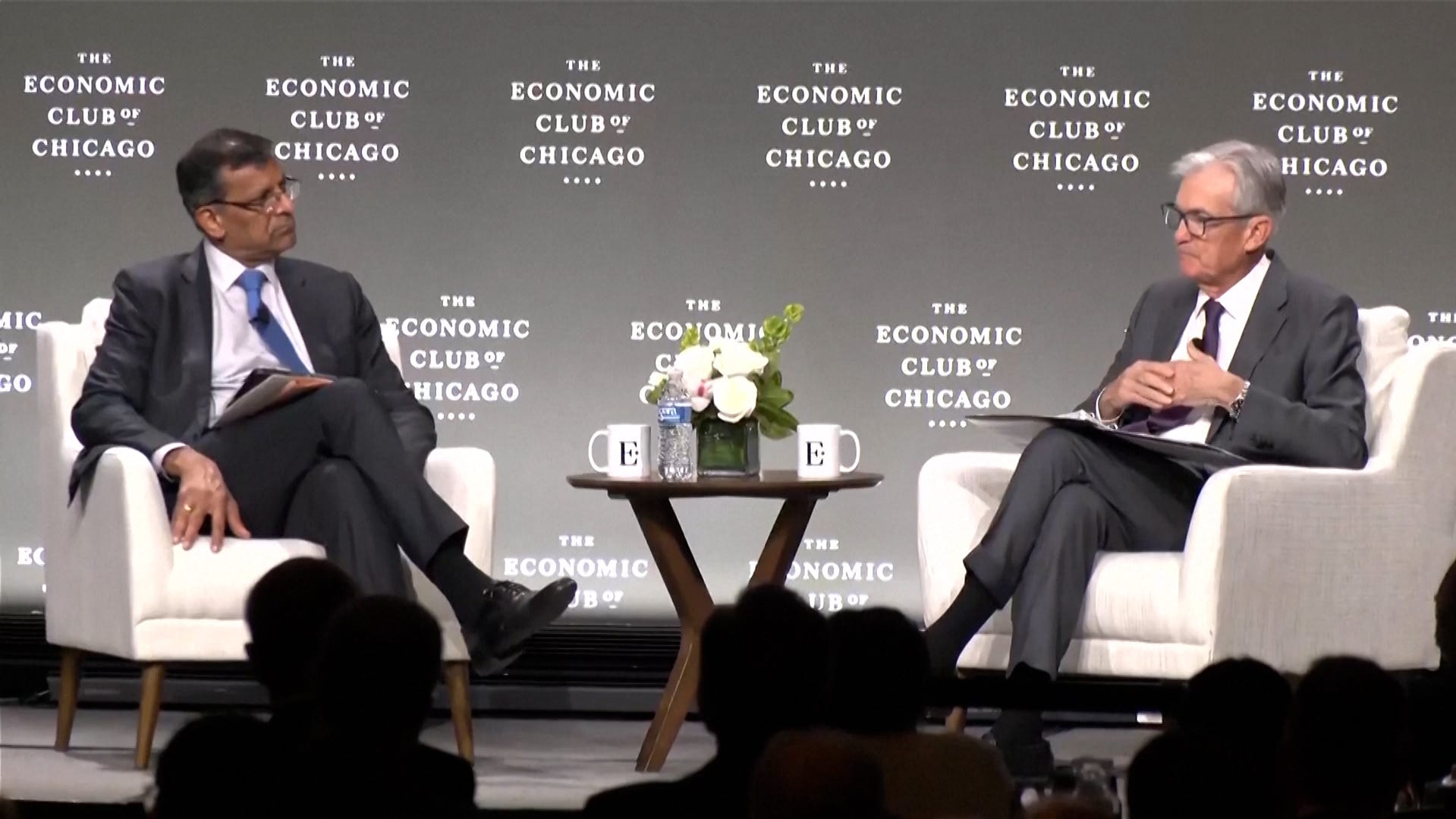
Powell: Fed needs clarity on tariffs, policy changes
Federal Reserve chair Jerome Powell says that they need “greater clarity” on tariffs before deciding to cut interest rates.
Federal Reserve Chair Jerome Powell’s comments Wednesday appeared to heighten financial experts’ fears that tariffs on goods imported to the U.S. could bring about an economic condition known as “stagflation.”
Powell didn’t use the exact word, but said President Donald Trump’s on-again, off-again tariffs were “highly likely” to fuel inflation and could slow growth – two things that when combined have historically marked periods of stagflation.
“Unemployment is likely to go up as the economy slows, in all likelihood, and inflation is likely to go up as tariffs find their way and some part of those tariffs come to be paid by the public,” Powell said in a speech at the Economic Club of Chicago. “So that’s the strong likelihood.”
Powell said the Fed is focused on keeping inflation contained and waiting for more clarity before making policy changes. A day after his remarks, the president lashed out against the Fed chair.
“Stagflation” worries aren’t new. Concerns about the phenomenon spiked in 2022, but it hasn’t actually been seen in the U.S. since President Jimmy Carter’s administration more than 40 years ago.
But what exactly is “stagflation?” Here’s what to know:
What is stagflation?
Although the term lacks a formal definition, stagflation occurs during times of high inflation and slow economic growth. It typically coincides with high unemployment and rising prices.
Inflation is typically low when the economy is weak. Higher inflation is more common in a strong economy when consumer demand drives up prices. Stagflation offers the worst of both worlds: slow economic growth and steep prices.
Spikes in the cost of raw materials can give rise to stagflation, triggering inflation and leaving consumers with less money to spend.
American stagflation was prominent in the late 1970s and early 1980s, when inflation and unemployment both rose above 5% following oil embargoes on the U.S.
Is the U.S. headed toward stagflation?
Current tariffs on goods imported to the U.S. present a few challenges. Financial experts worry they will drive up prices, lowering consumer spending that accounts for most of the country’s economic activity. At the same time, tariffs bring increased uncertainty that can stifle investment and prompt layoffs as businesses are unsure of how to plan for the future.
In March, U.S. employers added 228,000 jobs, but gains from the previous two months were revised down. The unemployment rate rose from 4.1% to 4.2%, according to the Bureau of Labor Statistics.
Financial experts worry the tariffs will slow the economy and increase inflation, leaving the Fed in a difficult position. Broadly speaking, the Fed lowers interest rates to strengthen a weak economy and raises interest rates to fight inflation. One rate usually can’t do both.
Powell signaled Wednesday the Fed will assess whether high inflation or a slow economy poses a greater risk for the U.S. It has yet to announce if, when, or by how much, it will adjust interest rates.
Contributing: Paul Davidson, Eric Lagatta, Marina Pitofsky & Andrea Riquier
Reach Rachel Barber at [email protected] and follow her on X @rachelbarber_







